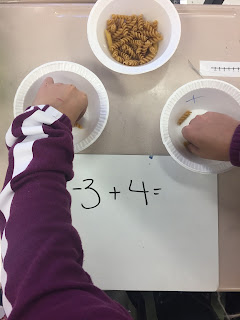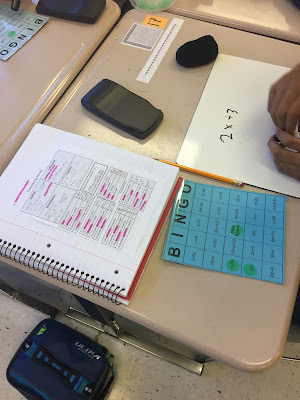Show to me to fish--I might be able to regurgitate it...
Teach me to fish--I may catch on...
Allow to experience fishing-- I will apply everything I knew and connect it to this new skill.

How do we create more fishing experiences in our math classrooms?
Instead of just a simple answer....I am hoping to spark a conversation about it and how this can be more normed in our math classrooms with a few embedded supports and ideas along the way.
The one answer I am not okay with is, we don't have time. I would argue you don't have time not to. Giving our students these experiences is a necessity to honor them where they are at and allow our students to hold math in their hands.
I can also guarantee you won't have time if you attempt do a project as a "dessert" every unit.
Let's think about this.
Take a look at the next big idea you are teaching...
...
...
...
...
...
......immediately you started thinking about the skills that your student need to be able to regurgitate on the test.
You're not alone. It is almost subconscious how quickly we do it.
So.....
Instead, let's pause.
Why do they need this skill?
How can students experience this "big idea"?
What prior knowledge is actually going to help them access this big idea?
We tend to teach in these closed circuit units. As if our students came to us with very little and we have so much knowledge to impart on them. By doing this we lose the connections in mathematics that can be so valuable for students to understand the journey they are on as a mathematician.
In addition, as educators, we teach the strategies and at the end of the unit we test out their application of algorithms with some word problems.
So in the case for experiencing the fishing....let's flip this; start with the contextual problems (word problems) to help support the reasoning and connections.
A place to start is with Dan Meyer, the guru of 3 Act Math Tasks or Kyle Pearse's Tap into Teen Minds. Never used 3 Act Math Tasks? Take a look at the awesome #sketchnote below or either Dan or Kyle's sites have tutorials as well.
 |
| Awesome visual From Ms. Beattie's Classroom Blog: HOW TO ENGAGE YOUR STUDENTS WITH 3-ACT MATH TASKS |
This can be easily coupled with the Math Task/Rich Task structure of Math Workshop and 5 Practices book (let's be honest do any of us know it as anything other than the 5 Practices book??)
Recently, I stumbled into Jon Orr and Kyle Pearce's Podcast Making Math Moments that Matter to say that they are amazing and have an amazing podcast is an understatement. I think listening to their 12th podcast might have been life changing.
So, how might we mesh this all the together???
Think about one block/period of your math class...
- Introduce a problem/predicament that is accessible to students without the big idea and that later connections to the big idea could be made
- Students work in collaborative groups to access and solve the problem using prior knowledge
- Teacher selects and has students specifically share in a CRA (concrete/representational/abstract) order
- Connect these strategies with more efficient big idea/strategy
- Give a follow up task in which the new method/strategy can be applied
By doing this what might be the benefits?
Students will see how their prior knowledge is being elevated and expanded upon. Students will make connections to prior units and prior math classes. Students will see authenticity and the why in their mathematical journey. Students will experience the value in learning the new strategy for future and more challenging problems. This big idea will have meaning. Students will experience fishing and then demonstrate fishing on their own!
An Example: Big Idea: Systems of Equations
- Use the Tap into Teen Minds Sticky Situation 3 Act Math Task
- Have students collaborate in groups of 2-4 to create a strategy in using their prior knowledge on the weight of the glue sticks and bottles of glue (Using Act 1 as the hook/problem and then Act 2 as the details)
- Have groups specifically share strategies (I love having students use large whiteboards to document and later share their work such as Wipebook)
- A concrete strategy that uses manipulatives or pictures
- A representational strategy that uses a table or pattern
- An abstract strategy that begins to start using an algebraic strategy
- Connect ideas and elevate strategies with the use of creating two equations
- Connect to a (or multiple) strategy to solve systems (such as substitution or elimination)
- (Show Act 3- the answer!)
- Have students complete Task 2: Write and Erase (scroll down) using new efficient strategy
In thinking of your next big unit how might your students experience fishing?
How might you apply this idea of teaching through rich tasks in your own math classroom?
I'd love to hear your thoughts!








































